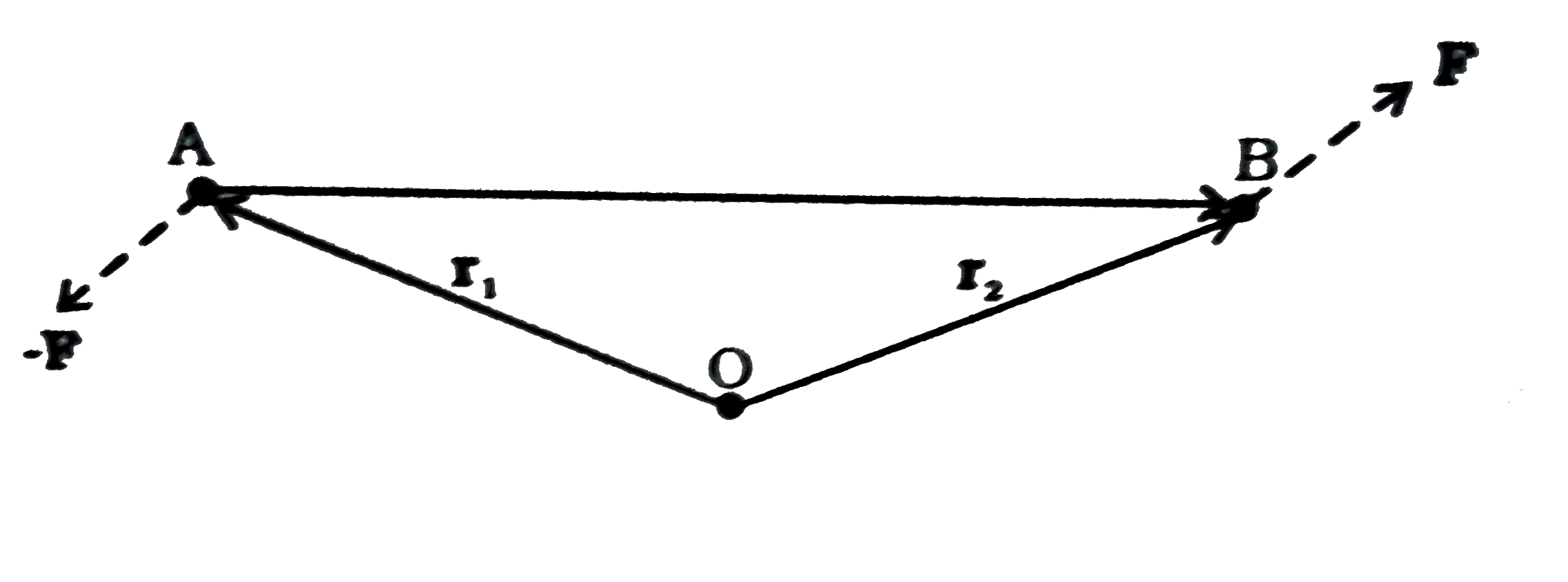Show that moment of a couple does not depend on the point about which you take the moments.
Video Solution
Text Solution

Consider a couple as shown in Fig. 7.22 acting on a rigid body. The forces F and -F act respectively at points B and A. These points have position vectors r1 and r2 with respect to origin O. Let us take the moments of the forces about the origin.
The moments of the two forces making the couple
=r1×(−F)+r2×F
=r2XXF−r1×F
(r2−r1)×F
But r1+AB=r2 and hence AB=r2−r1. The moment of the couple, therefore, is AB×F.
Clearly this is independent of the origin, the point about which we took the moments of the forces.
|
Updated on:21/07/2023
Topper's Solved these Questions
- BOOK - NCERTCHAPTER - SYSTEMS OF PARTICLES AND ROTATIONAL MOTIONEXERCISE - EXERCISE33videos
SYSTEMS OF PARTICLES AND ROTATIONAL MOTION
- BOOK - NCERTCHAPTER - PHYSICAL WORLD EXERCISE - EXERCISE16videos
PHYSICAL WORLD
- BOOK - NCERTCHAPTER - THERMAL PROPERTIES OF MATTEREXERCISE - EXERCISE22videos
THERMAL PROPERTIES OF MATTER
Similar Questions
Knowledge Check
- Question 1 - Select One
Moment of inertia does not depend on
Amass distribution of bodyBtorqueCshape of the bodyDthe position of axis of rotation - Question 2 - Select One
The moment of couple is independent of
Athe point about which the moment is found.Bmagnitude of the force.Cmagnitude of the distance between line of action of force and perpendicular distance.Dangle made by the line of action of force. - Question 3 - Select One
Moment of a couple is called
AimpulseBcoupleCtorqueDangular momentum
What is a couple ? What effect does it have on a body ? Show that moment of couple is same irrespective of the point of rotation of the body.
View SolutionMoment of inertia of a body does not depend on
View SolutionMoment of couple is called
View SolutionThe moment of inertia of a body does not depend upon-
View SolutionAssertion: Magnetic moment of a current loop does not depend on the shape of the loop.
Reason: Magnetic moment is a vector quantity and its direction is perpendicular to its plane.View Solution

